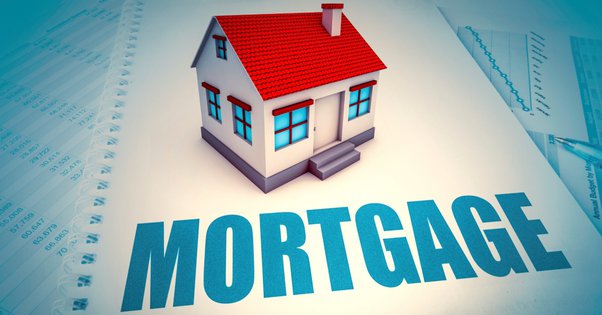Mortgage Prequalification: A Crucial First Step in Home Buying
Purchasing a home is a significant milestone that often comes with a whirlwind of emotions—excitement, anticipation, and, at times, anxiety. One of the most critical initial steps in this journey is mortgage prequalification. Understanding what mortgage prequalification entails and how it can impact your home-buying process is essential for first-time buyers and seasoned homeowners alike. This comprehensive guide will walk you through the ins and outs of mortgage prequalification, offering insights into its importance, the process, and how it can set the stage for a successful home purchase.
What Is Mortgage Prequalification?
Mortgage prequalification is an initial assessment of your financial situation by a lender to estimate how much you might be able to borrow for a home. Unlike preapproval, which involves a more detailed review of your financial documents and credit history, prequalification is a preliminary step that provides a general idea of your borrowing potential.
The primary goal of prequalification is to give you an overview of your financial readiness and help you understand what price range of homes you can afford. This can be particularly useful in narrowing down your search and setting realistic expectations.
Why Mortgage Prequalification Matters
1. Provides a Clear Budget
One of the most significant benefits of mortgage prequalification is that it helps you establish a budget for your home purchase. By understanding your borrowing capacity, you can focus on homes that fall within your financial range, avoiding the disappointment of falling in love with a property that is beyond your means.
2. Streamlines the Home-Buying Process
Prequalification can streamline the home-buying process by giving you a clearer picture of your financial situation. When you know your budget, you can work more efficiently with real estate agents to find suitable properties, reducing the time spent on homes that are out of reach.
3. Strengthens Your Offer
While prequalification is not as robust as preapproval, it still demonstrates to sellers that you are a serious buyer. In competitive housing markets, having a prequalification letter can strengthen your offer, making it more appealing to sellers who want to ensure that potential buyers are financially capable.
4. Identifies Potential Issues Early
During prequalification, lenders review your basic financial information to provide an estimate of what you might be able to borrow. This preliminary assessment can help identify any potential issues with your credit or financial situation early on, allowing you to address them before you start house hunting in earnest.
The Mortgage Prequalification Process
1. Gather Financial Information
The first step in the prequalification process involves gathering key financial information. This typically includes:
- Income Details: Recent pay stubs, tax returns, or other proof of income.
- Assets: Bank statements, investment accounts, and details of any other assets.
- Debts: Information on existing debts, such as credit cards, student loans, and auto loans.
This information helps lenders assess your financial stability and determine how much you might be eligible to borrow.
2. Submit a Prequalification Application
Once you have gathered your financial documents, you will need to complete a prequalification application. This can often be done online or in person with a lender. The application will require basic personal and financial information, including your income, employment status, and assets.
3. Receive a Preliminary Estimate
Based on the information you provide, the lender will give you a preliminary estimate of how much you might be able to borrow. This estimate is based on general criteria and is not a guarantee of loan approval. It is an initial assessment that helps you understand your borrowing capacity.
4. Review and Adjust
Once you receive your prequalification estimate, review it carefully. If the estimated amount is lower than expected or if there are any discrepancies, you may need to adjust your financial information or address any issues that may have been identified. This step ensures that you have a realistic understanding of what you can afford.
Key Considerations for Mortgage Prequalification
1. Prequalification vs. Preapproval
It is important to distinguish between prequalification and preapproval. While prequalification provides a general estimate based on self-reported information, preapproval involves a more thorough review of your financial documents and credit history. Preapproval carries more weight and provides a stronger indication of your borrowing capacity. If you are serious about purchasing a home, pursuing preapproval may be a prudent next step.
2. Accuracy of Information
The accuracy of the information you provide during prequalification is crucial. Since prequalification is based on the data you submit, any inaccuracies or omissions can affect the estimate you receive. Ensuring that your financial information is complete and accurate will help you receive a more reliable estimate.
3. Impact on Credit Score
Unlike preapproval, prequalification typically does not involve a hard credit inquiry. Instead, it usually involves a soft inquiry, which does not impact your credit score. This makes prequalification a relatively low-impact way to get an initial sense of your borrowing capacity.
4. Market Conditions
Keep in mind that mortgage rates and market conditions can fluctuate. The prequalification estimate you receive is based on current rates and conditions, but these can change. It is important to stay informed about market trends and be prepared for potential adjustments to your borrowing capacity.
Benefits of Mortgage Prequalification
1. Simplifies Home Search
By providing a clear budget, prequalification simplifies your home search. With a defined price range, you can focus on properties that fit within your financial parameters, saving time and avoiding frustration.
2. Enhances Negotiating Power
Having a prequalification letter can enhance your negotiating power when making an offer on a home. Sellers may view you as a more serious buyer, increasing the likelihood of your offer being accepted.
3. Reduces Stress
The prequalification process helps alleviate some of the stress associated with home buying. Knowing your budget and having a preliminary estimate of your borrowing capacity can make the process more manageable and less overwhelming.
4. Provides a Roadmap
Prequalification offers a roadmap for your home-buying journey. It helps you understand what you can afford and sets the stage for more detailed financial planning as you move forward in the process.
Common Misconceptions About Mortgage Prequalification
1. Prequalification Guarantees a Loan
A common misconception is that prequalification guarantees a loan. While it provides an estimate of what you might be able to borrow, it does not guarantee approval. Further steps, including a detailed financial review and credit check, are required for final loan approval.
2. Prequalification Is the Same as Preapproval
As mentioned earlier, prequalification and preapproval are different. Prequalification is a preliminary step, while preapproval involves a more in-depth review. Preapproval is a stronger indicator of your borrowing potential.
3. Prequalification Is Only for First-Time Buyers
Mortgage prequalification is beneficial for both first-time buyers and those who have purchased homes before. It provides valuable insights into your financial readiness regardless of your experience in the housing market.
Conclusion
Mortgage prequalification is a crucial first step in the home-buying process. By providing a preliminary estimate of your borrowing potential, it helps you set a budget, streamline your home search, and enhance your negotiating power. Understanding the prequalification process and its benefits can empower you to make informed decisions and approach your home purchase with confidence.
As you embark on this significant journey, remember that prequalification is just the beginning. Following up with a more detailed preapproval process and staying informed about market conditions will further refine your home-buying strategy. With careful planning and a clear understanding of your financial readiness, you’ll be well-equipped to navigate the path to homeownership and turn your dream of owning a home into a reality.


